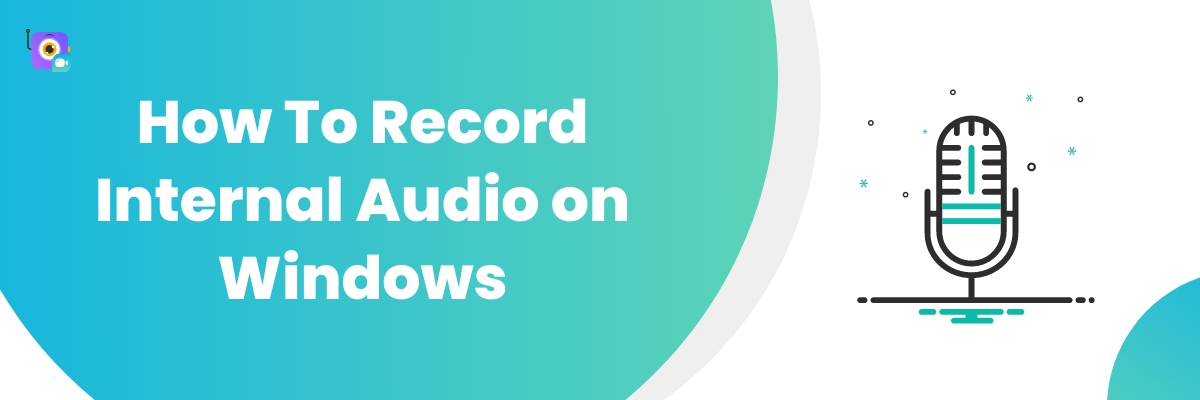How To Record Internal Audio on Windows 7, 8, 10 & 11
Although all the recent versions of Windows computers come with a pre-installed voice recorder application, it cannot be used to record high-quality recordings as its functionalities are pretty basic.
If you're someone who records webinars, tutorials, screencasts, or meetings regularly, you might want to go for a more enhanced internal audio recorder that comes with built-in editing functionalities.
There are a wide variety of internal audio recorders available online. You can choose any one of them that suits your recording requirements. For example, if you're someone who records screencasts or training videos repeatedly, choose a recording software that provides screen annotation features. Similarly, if you're someone who records multiple gameplays, choose a recording software that supports enhanced gaming features.
Now, without any further ado, let's dive in and learn how to record internal audio on all Windows 7, 8, 10 & 11 computers.
How to Record Internal Audio on Windows 7, 8, 10 & 11 PC
In this post, we take you through the process with the help of an internal audio recorder called Vmaker. It's one of the most user-friendly recorders available online and comes with a ton of impressive features like background noise cancellation, virtual background, and mouse emphasis.
Here's a sneak peek of what all you could do with Vmaker:
- Record gameplay
- Record meetings
- Record Powerpoint presentations & Google Slides
- Create instructional videos
- Create training videos
- Create tutorial videos
- Create How-to videos
- Create video emails
- Create product demonstration videos
Let's get started!
Here's a quick video that walks you through the recording process in simple steps.
Prefer reading? Follow these simple instructions.
Step 1: Sign up & download Vmaker
Head over to Vmaker's homepage and create an account.
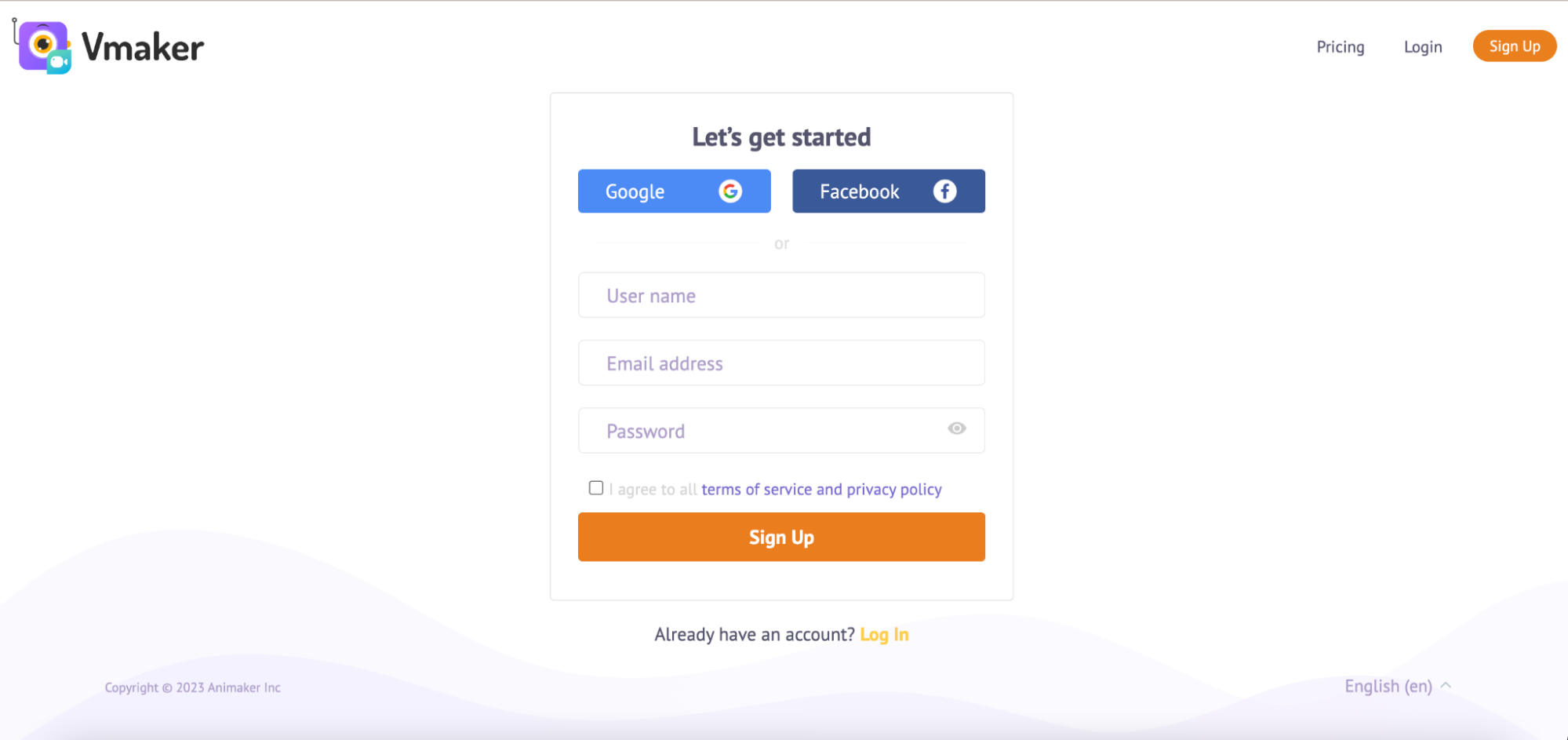
Once you're logged in, you'd be able to access Vmaker's dashboard.
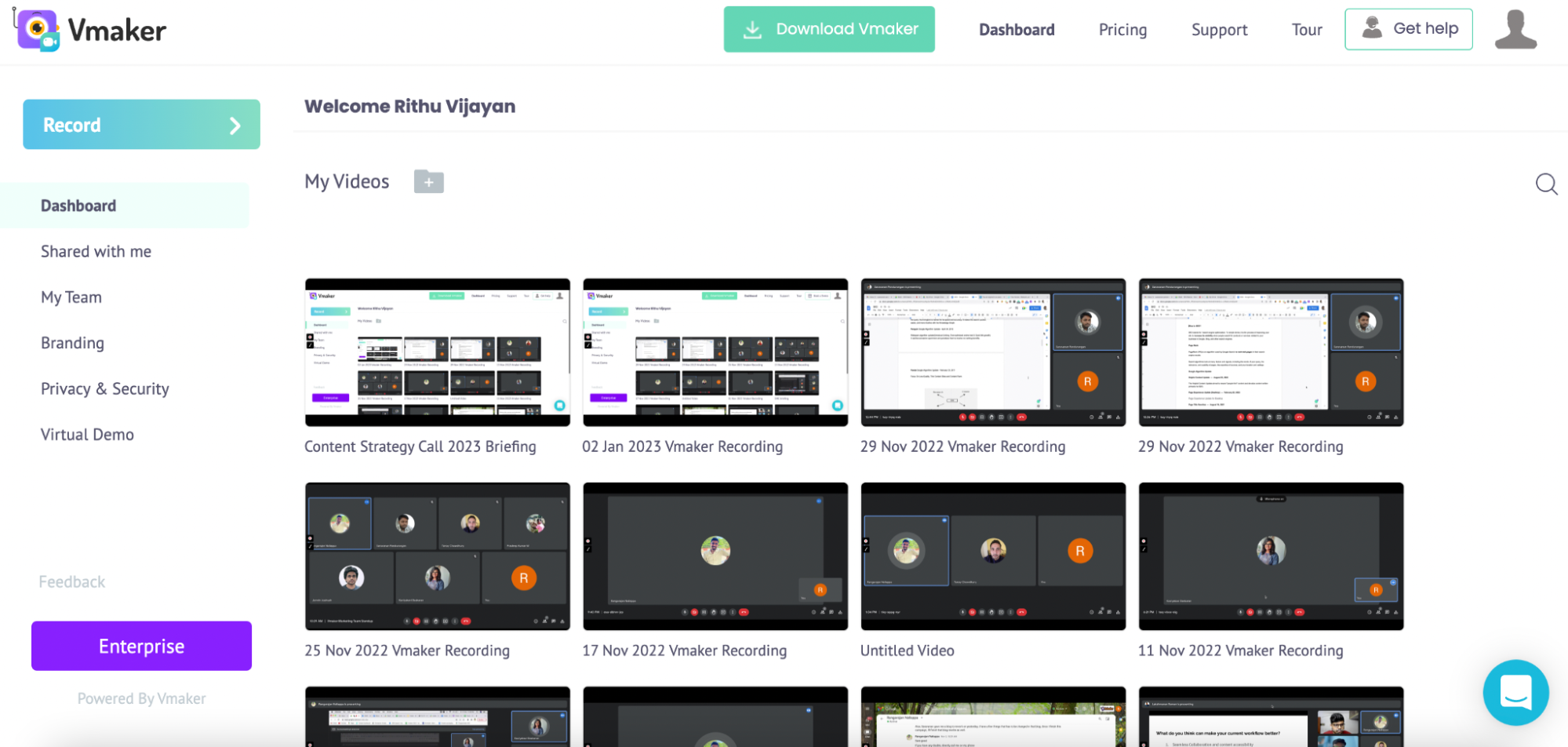
Click on the Record button in the top left corner of the dashboard.
As soon as you click on the record button, you'd be presented with a pop-up box with options to download Vmaker.
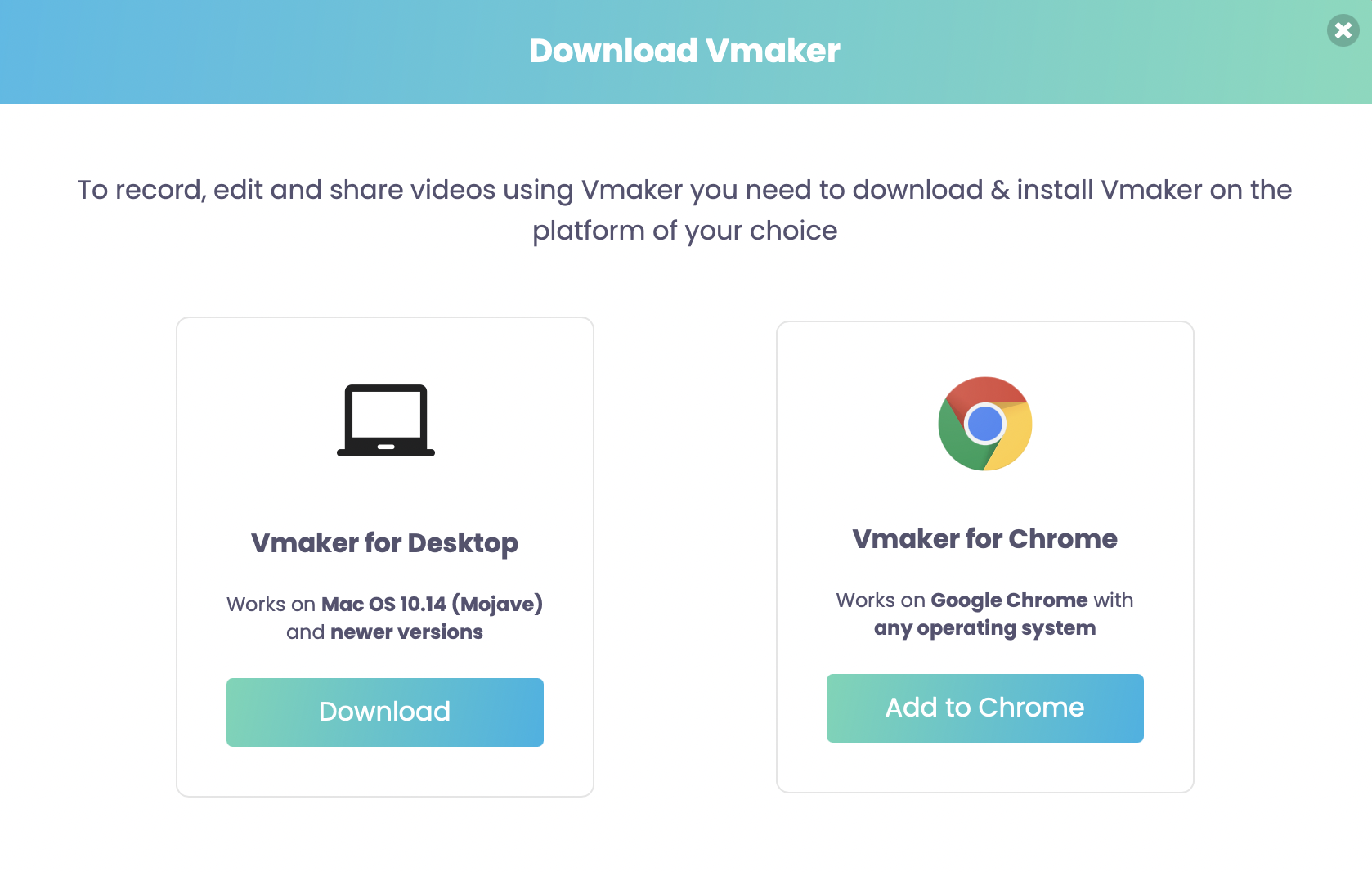
Select Vmaker Screen Recorder Windows and download it to your PC.

Step 2: Set all your recording preferences
Once you've downloaded the application to your PC, you can go ahead and customize your recording preferences. Launch Vmaker and select your recording modes.
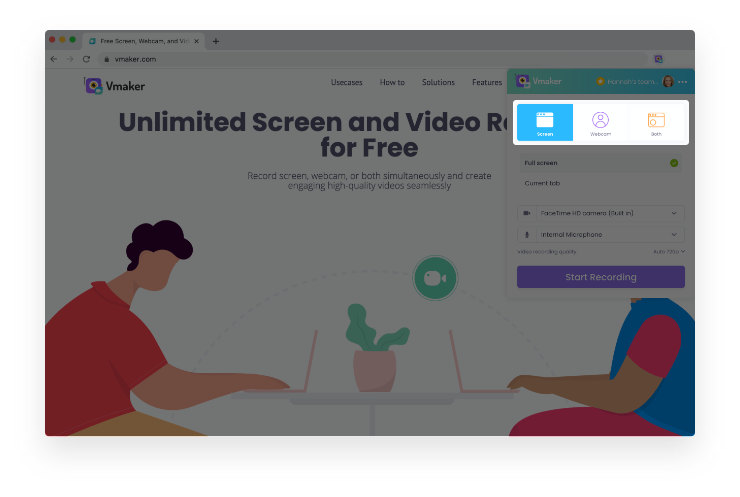
- If you wish to record your screen alone, select the ‘screen’ option
- If you wish to record your webcam alone, select the ‘webcam’ option
- If you wish to record both your screen and webcam, select the ‘screen + webcam' option
You can now enable the internal audio (system audio) feature. Simply click on the system audio icon and it will be enabled.
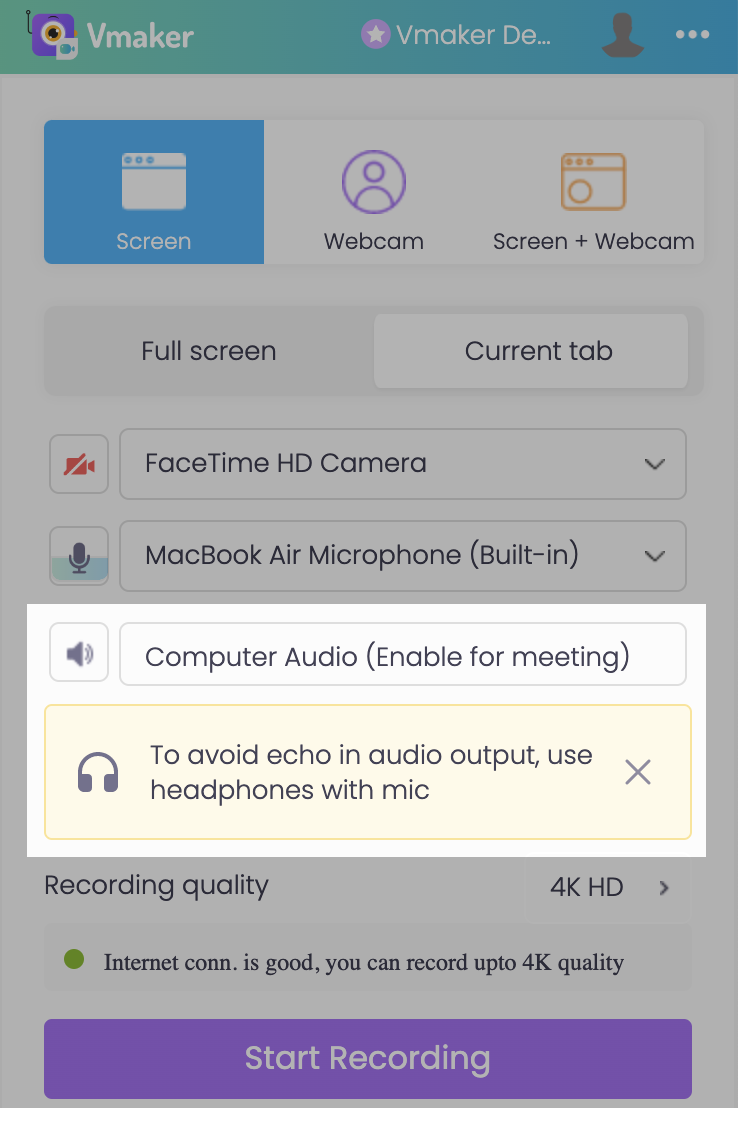
Make sure you also choose your video recording quality. (Vmaker is a 4K screen recorder and allows you to record, edit, and export 4K videos seamlessly).
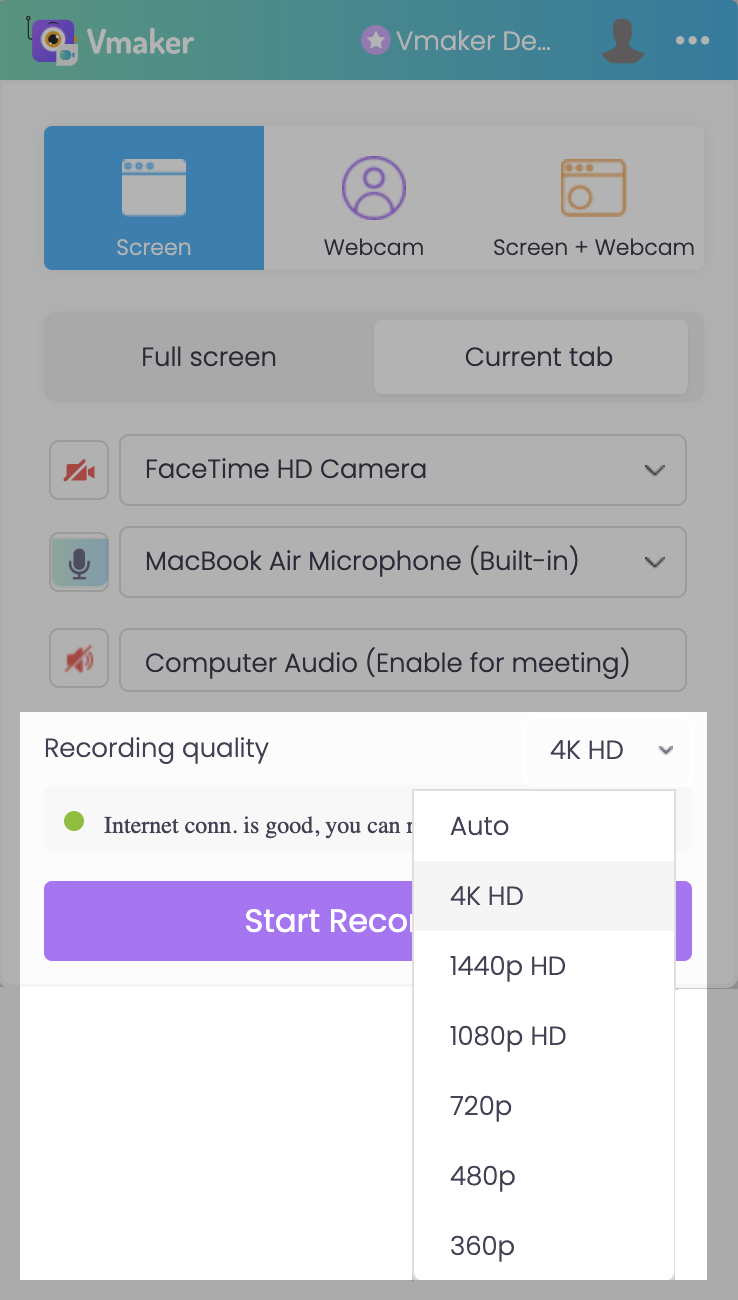
Step 3: Make use of the advanced features
If you're fine with just these basic functionalities, you can choose to start recording your video right away by clicking on the 'Start Recording' button. But, if you'd like to customize your recording with advanced features, click on the three dots in the top right corner of the pop-up box and choose Preferences.
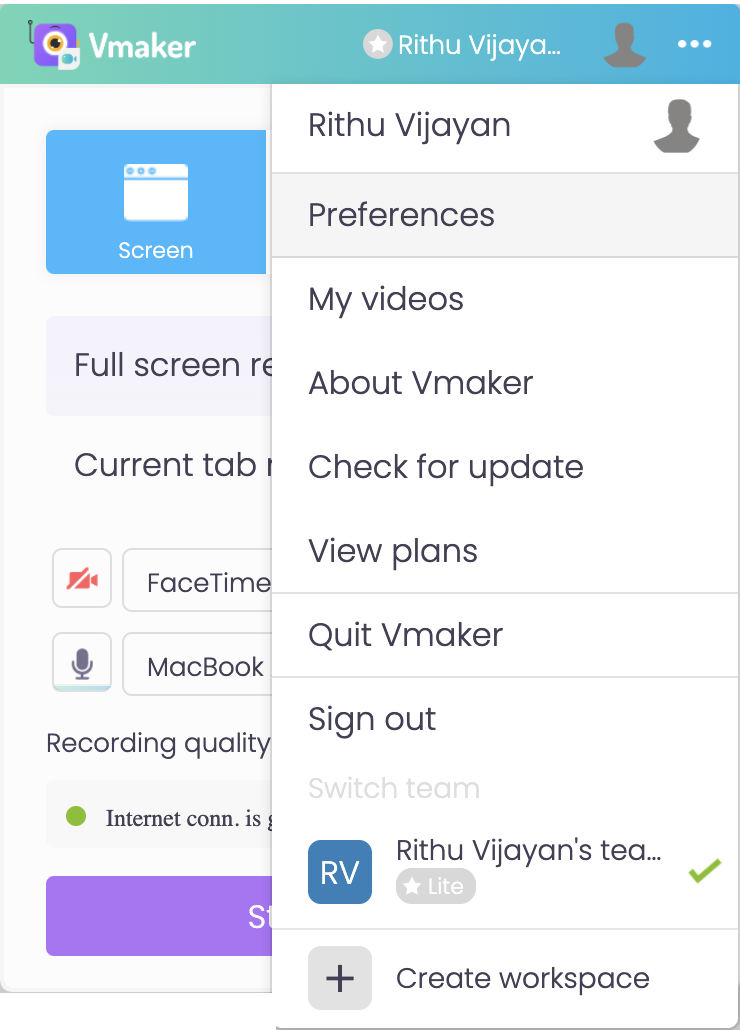
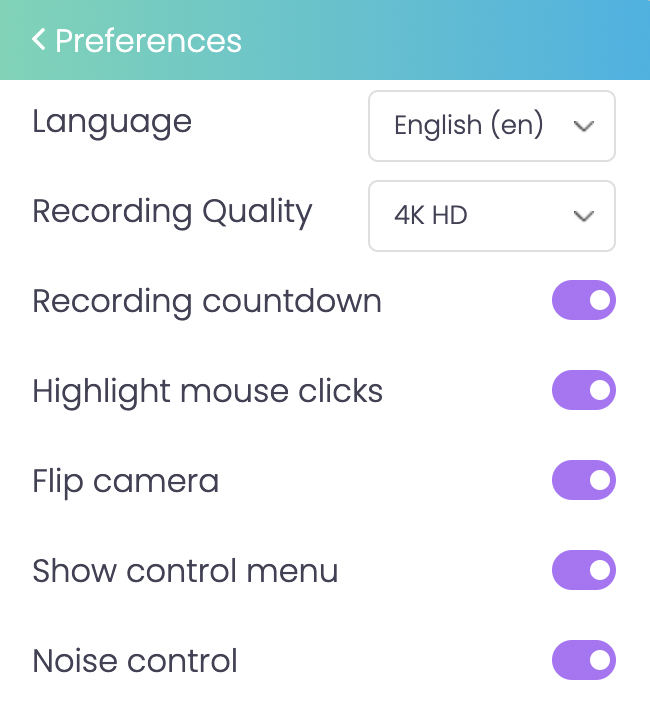
Choose your preferred language and enable all the features that you'd like to add.
Once you're ready to record, click on the Start Recording button. A timer starts, and within a countdown of three, your video recording starts.
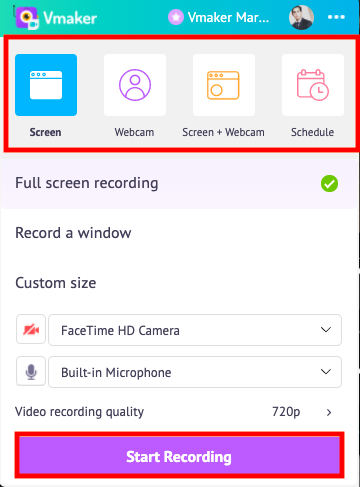
While recording, you can make use of the screen annotation tools to highlight important sections on your screen. To enable the screen annotation feature, click on the Annotate icon on the left corner of your screen, and choose the colour you'd like to annotate on.
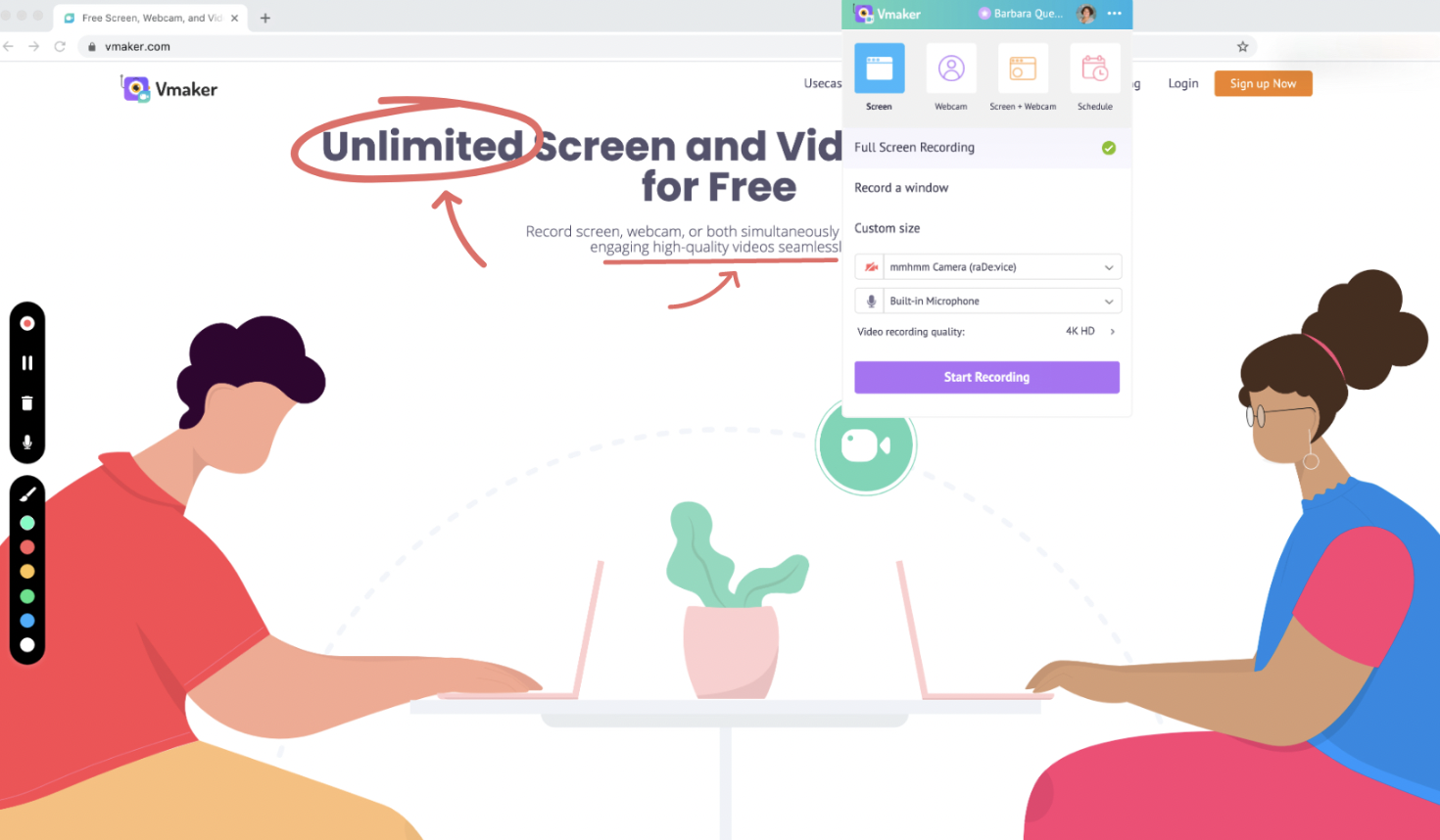
As soon as you're done with the recording, click on the red dock button on the left corner of your screen to stop your recording.
You will now be directed to the player page (from where you can edit, download, or share your recording).
Step 4: Edit your recording on the built-in editor
Your recording is done. If you prefer editing your recording, you can do so by clicking on the Edit Video icon. You'd be directed to Vmaker's built-in video editor. Here, you can trim, cut, crop, flip, merge, rotate, change speed, and resize your video according to your preference.

You can also merge external videos to your current recording using the Upload option on the left corner of your screen.
As soon as you're done with the editing process, click on the Export button on the top right corner of your screen to export your edited video.
Step 5: Share your recording with others
Now, you are free to share the recording with others. You have three options.
- Share the video with others (by copying the video link)
- Directly upload the video to your favourite social media platform (like Facebook, YouTube, Twitch, etc.)
- Download the video to your system
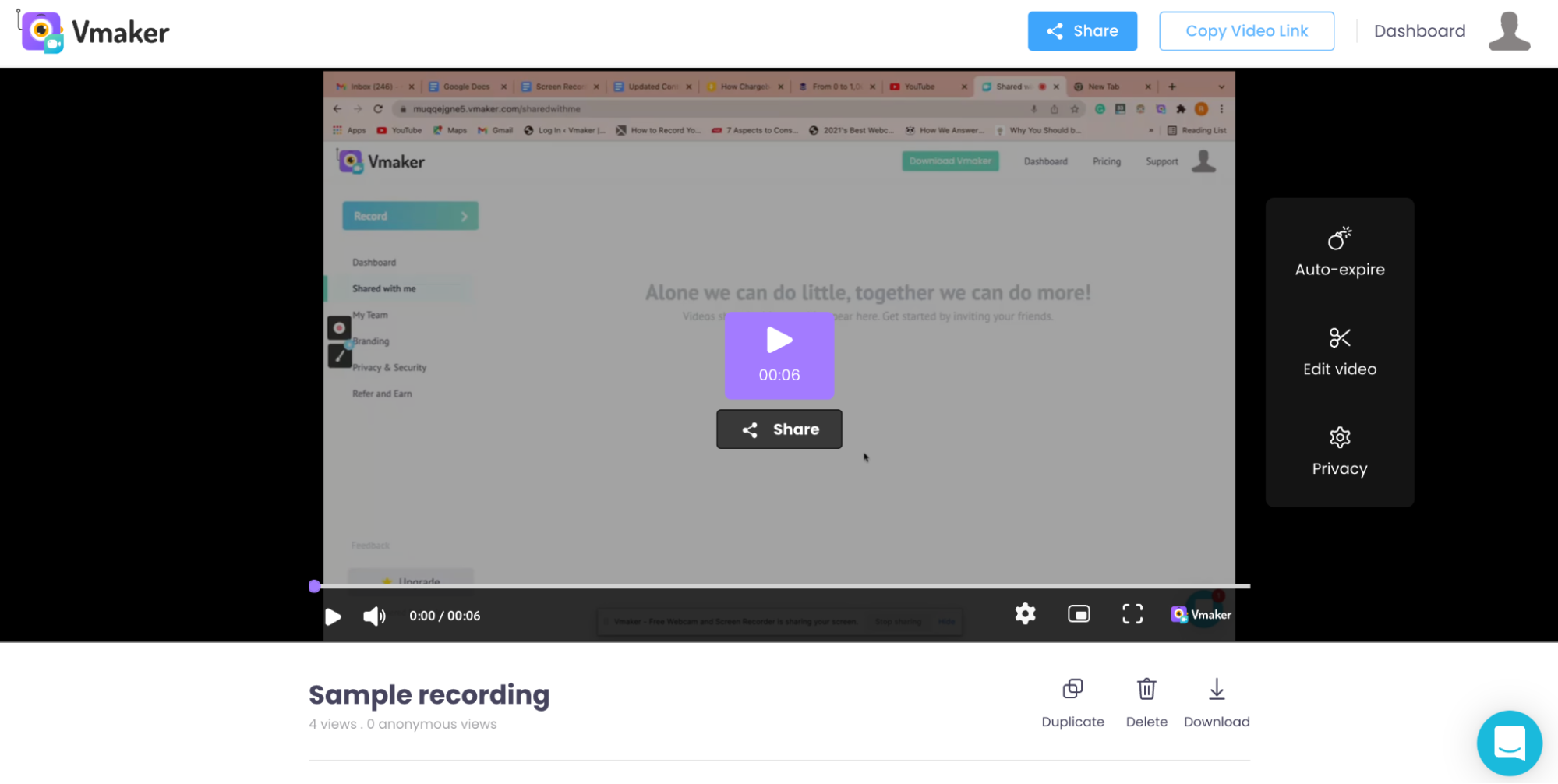
That's it! You're done.
Note: For Windows 7 and Windows 8, please use our Chrome Extension.Frequently Asked Questions
1. How to Record Audio on Windows PC without a microphone?
When you use internal audio recorders like Vmaker, you can easily turn off your microphone and record only your internal audio. To do this, simply click on the microphone icon to disable recording your microphone audio.
2. What are the best internal audio recorders for Windows PC?
Here's a list of the top 5 internal audio recorders available online:
3. How to Record screen and internal audio on Windows 10 & 11?
There are multiple internal audio recorders like Vmaker that record your screen, webcam, and (screen + webcam) with both internal and external audio. Just follow the steps stated above and you'd be able to record any number of videos seamlessly.
Recommended Reads
5 Super-Easy Ways To Record Internal Audio on Mac
How to Record Your Screen With Audio (On Mac, Windows & Chromebooks)
Top 10 Screen Recorders For Windows 7, 8, 10 & 11 (Both Free & Paid)
